Green Labs Program
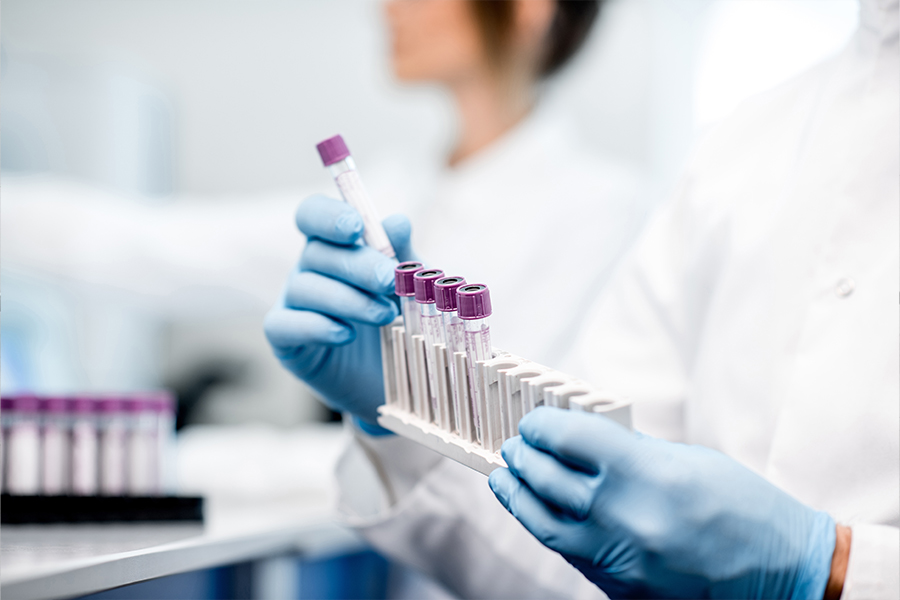
To align with the med center’s sustainability goals and to keep pace with the scientific community, we have launched a green labs program.
The mission is to provide a common-sense and obtainable approach for our laboratory and research spaces to achieve excellence in innovation and safety by driving meaningful reductions in energy, water and waste and promoting responsible purchasing.
Our world-class research drives breakthroughs that improve lives across Nebraska and beyond. By collaborating with providers, our researchers accelerate discoveries and deliver life-changing therapies to patients. With $268.8 million in research expenditures, 1,485 active projects and 523 faculty investigators, we're tackling today’s most critical medical challenges while shaping the next generation of healthcare leaders. Across campus, 1,344 staff members interact with labs as part of their job function, illustrating the immense potential impact of a full-scale program.
Research spans bench science labs, translational centers and clinical trials, all supported by state-of-the-art facilities. The Omaha campus boasts more than 740,000 square feet of dedicated research space, and Nebraska Medicine's core facilities provide dozens of shared technologies and services to advance innovation.
Impacts
Laboratories present a higher demand for resources compared to other building space types, accounting for a larger percentage of organizational spending and subsequent impact.
- Laboratories have 5 to 10 times higher energy use intensity than standard office spaces and a five times higher water use intensity.
- The waste generated in a wet lab setting is numerous and varied. Unlike standard office spaces, laboratories can produce multiple types of hazardous waste, including chemical waste, infectious (biohazard) waste, or pathological (large tissue) waste, all of which present challenges to store and process.
- Laboratory researchers produce around 15 times the amount of plastic waste compared to the average individual, estimating a total of 5.5 million tons of plastic waste in a single year from labs.
Advantages
Benefits of participating in the Green Labs Program:
- Reduce operating costs by using resources more responsibly.
- Added competitive edge in applying for federal grants.
- Attracts new and innovative research.
- Foster a culture of sustainability to accelerate action supporting institutional sustainability goals.
To learn more about the Nebraska University system's overall sustainability goals, visit their website.
Program Goals
- Increase awareness of institutional-level sustainability goals and opportunities for lab participation.
- Provide feasible solutions to lab sustainability issues through collaboration, accountability, intelligent design, creativity and innovation.
- Continue to find areas of improvement through reporting impact data and highlighting performance indicators.
- Participating labs do not see any noticeable decrease in their lab productivity.
For questions about the Green Lab program, reach out to the Green Labs team.
How to get started?
A lab representative must complete the Green Lab registration form found here. It is expected that the individual who has filled out the form has discussed with other personnel in their lab, including lab leadership, to confirm willingness to participate.
Participating labs are required to identify an individual as the Green Lab Navigator, someone who will manage the certification process. This includes completing any required documentation, providing updates and answering questions from lab staff about the Green Lab process and requirements and serving as the main point of contact with the Office of Sustainability.
Once the lab has registered for the program and the Green Lab Navigator has been selected, the lab will receive a copy of the Green Lab Scorecard in a OneDrive folder. Labs are encouraged to save the scorecard somewhere lab members are able to access. Scorecards are designed to be completed electronically and should not be printed. The Green Lab Navigator will lead the lab in completing the baseline assessment of their lab before submitting it for review.
Green Lab Certification Levels
Certified labs achieve ascending certification levels (bronze, silver, gold, and green) based on the percentage of credits a lab completes.
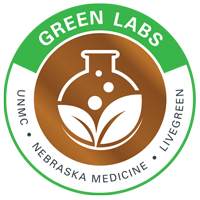
Bronze
20% of attempted credits
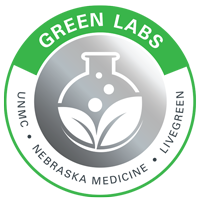
Silver
40% of attempted credits
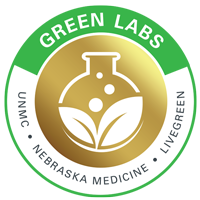
Gold
60% of attempted credits
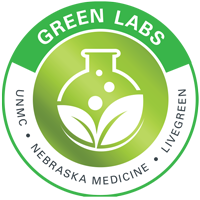
Green
80% of attempted credits
Track Our Progress
See how our team is meeting our sustainability goals.